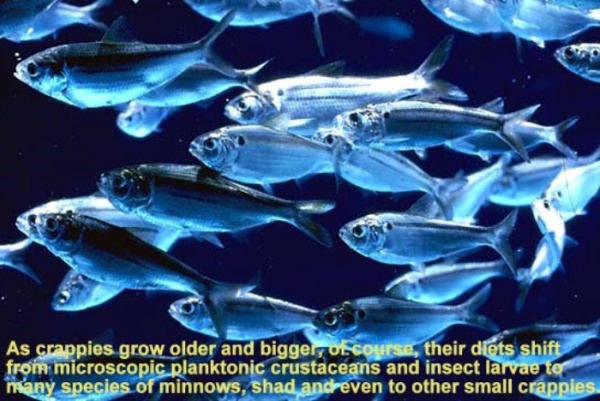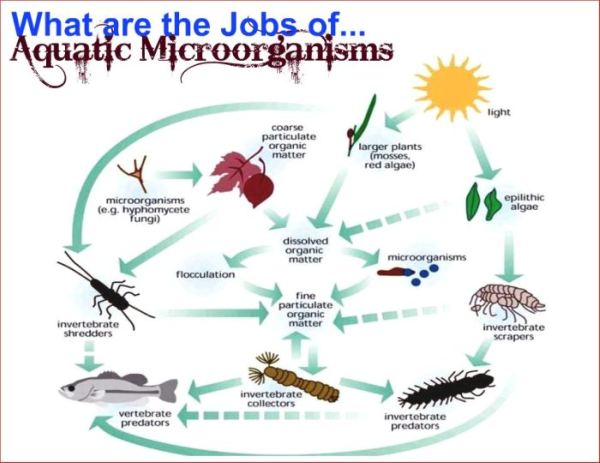 As Promised ~ Here’s Crappie Fishing 101 ~ For Newbies.
As Promised ~ Here’s Crappie Fishing 101 ~ For Newbies.

Welcome to Crappie Fishing 101 ~ For Newbies.

The Top Ten Reasons Why You Don’t Catch More Fish.
We all read the fishing reports that are posted to our area boards and you can see (for yourself) results that seem to be all over the place. You see some fishermen who appear to continually find active fish and always seem to enjoy a good result; others who (occasionally) find some active fish and seem to have only intermittent or inconsistent results; and of course, the biggest majority, others who really struggle to find any active fish and are very frustrated by the fact that they rarely have any sort of favorable outcome at all.

I learned something many years ago that really first opened my eyes to the enormity of the fish catching problem for anyone who is relatively new to crappie fishing… and that’s the fact that 80% of the active fish can only be found in about 20% of the water on any given lake or impoundment on any given day or time. This principle is known among fishermen as the 20% rule and I discussed it at some depth in the Pattern Fishing Series that I did last year. I really try not to keep repeating myself, but I do believe it is hard, if not impossible, to talk about finding, patterning and catching crappies without doing some review of the information that I have previously covered and backing up to another very important rule of fishing that I also covered in that series and that is:

In this Series ~ Crappie Fishing 101… I will attempt to reveal the top 10 reasons why I believe most fishermen aren’t finding or catching crappies with the consistency that they can or want to. I will also try to suggest some more logical approaches and mindsets that should help anyone find and catch more crappies anywhere, anytime.

Reason # One ~ Failing to Know Basic Biological Facts about Crappies.
I am sure that the top three reasons that people don’t catch the fish that they should or want to is because of their failure to understand very basis biological, migratory and environmental facts about crappies. It’s my opinion that biology, migration and environment are the basic elements that you absolutely must consider when laying your foundation for everything else… whether you are just learning to fish for crappies, or whether you have been doing it for a long time, …because these factors take into consideration the natural or instinctive behaviors of crappies and tend to dictate more than anything else where crappies will be located and what they will be doing at any given time of the year.
BIOLOGICAL FACTS
“One ounce of biology is worth two pounds of tackle.” I couldn’t agree with any statement more than I do that one, which is my entire point of starting this article and talking first about the biological factors of crappie fishing.
Fall and wintertime crappies can certainly be puzzling to anglers… no doubt… but by arming yourself with the basic knowledge of their instinctive behaviors can really turn the tables in your favor. Both black and white crappies are very common all through the United States and Canada and they are widely acclaimed as the nation’s most plentiful and most prolific fresh water game fish. Crappies are cold blooded predators whose biology including is uniquely evolved for hunting, pursuing and ambushing its preferred forage. When you start your learning processes by (first) understanding the variety of things that crappies eat, you will also begin to understand where to find them, how to catch them, and ultimately one of the reasons why they behave the way they do at any time throughout the fishing season.
One important biological fact is crappies live up to eight years and become sexually mature at one to two years. Crappies belong to the sunfish family and as such are all classified as nest builders. Spawning normally takes place from mid-March to early May, beginning when water temperatures reach 65 degrees and peaking between 68 and 72 degrees. Crappie always spawn in one to six feet of water, usually in the backs of protected bays or coves, on shallow submerged islands, under overhanging banks, on or near shallow flooded brush and timber, or near shallow submerged vegetation. They usually nest in shifts or waves (never all at once) and the females have been known to spawn more than once. After crappies’ eggs hatch, fry spread out quickly and move to deeper water within just a few days.

Young crappies are efficient and gregarious eating machines even from their juvenile first months of life. They have numerous long, fine gillrakers that allow them to capture, filter out, and utilize just about anything nutritious that swims, especially the hordes of planktonic crustaceans and free-swimming aquatic insects and larvae that populate most good crappie waters, even the lake in your area.

We also need to mention their microscopic cousins, critters like water fleas, midge and mosquito larvae, just to name a few, (some populations have been measured as high as a million per square yard of lake bottom), and you soon begin to understand the wealth of crappie food that’s available to young crappies and why this sort of information is useful to you as a crappie fisherman.

I know by this point you must surely be asking, why in the world should it be important to me that these types of microscopic critters even exist in our waters… if I can’t even see them? Well, my answer is, I’m sure you have heard even veteran fishermen say… “On windy days you should fish against windblown banks or points because the wind blows bait fish and small crappies up against these spots, which in turn draw harvestable crappies to these areas.” I’m also sure you have heard them say… “When on night-stalks, the reason for the artificial lights is to draw bait fish, including small crappies, which in turn draw harvestable crappies.”
The fact of the matter is these statements are incomplete and are (unintentionally) only partial truths. The whole truth is, the wind blows zooplankton and other microscopic organisms, such as those mentioned above, up against windy banks and points, which in turn draws bait fish and smaller crappies to feed upon them, which in turn draws harvestable-sized crappies to feed upon them. The same is true for night fishing: The artificial lights draw an array of zooplankton, other microscopic organisms and small aquatic insects and larvae, which in turn draws bait fish and smaller crappies to feed upon them, which in turn draws harvestable-sized crappies to feed upon them.

Regardless of whether it is windy or not or daytime or dark, you can bet your empty live-well that baitfish and very young crappies are in search of and in pursuit of these microscopic organisms and small aquatic insects and larvae. Where there are concentrations of these types of organisms and small aquatic insects and larvae there are concentrations of baitfish and small crappies; and where there are baitfishes, such as shad, small crappies and other species, there are the concentrations of slab crappies that you are looking for. As you can see from the diagram (above), there truly is quite a predictable chain of events that is inherent in the aquatic food chain and you should understand this as a basis or foundation for all of your scouting and fishing missions.
The next topic of this series and reason number two regarding why some beginners are not catching more fish ~ Failing to Understand Basic Migratory Facts about Crappies is coming up next.
Thanks for reading this post. I look forward to some good comments, discussion and to hearing your thoughts and feedback on the importance of biology to your crappie fishing success.
Good Luck to You All. Special K Thumbs Up Thumbs Up
"Just Like Iron Sharpens Iron... So it is that One Man Sharpens Another Man." Proverbs 27:17
 Likes: 0
Likes: 0
 Thanks: 0
Thanks: 0
 HaHa: 0
HaHa: 0